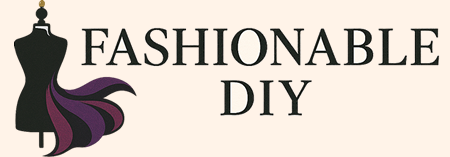Finances and Fashion: DIY Wardrobe on a Budget
The Cost of Trend-Chasing
While fast fashion makes the latest styles accessible, it encourages a culture of constant buying. This pursuit of trends results in frequent wardrobe turnover, leading to increased spending over time. Many consumers find themselves with closets full of unused items, reflecting poor investment choices.
The garments from fast fashion brands are often of lower quality. This leads to faster wear and tear, requiring more frequent replacements and ultimately costing more. The cycle of buying cheap, disposable clothing is not economically sustainable for most individuals.
Chasing trends can also lead to a lack of personal style development. With focus shifted toward fleeting trends, individuals may struggle to find their unique fashion identity, influenced more by what’s popular than their genuine preferences.
Shopping Strategies for Smart Buys
When building a budget-friendly wardrobe, knowing when and where to shop can make a significant difference. Smart shopping involves timing purchases strategically and taking full advantage of seasonal sales to secure the best deals without compromising on style.
Timing Purchases Wisely
Knowing the best time to buy can save a substantial amount of money. For instance, major clothing retailers tend to offer discounts at the end of each season, such as winter or summer, as they clear old stock. Shopping during these times ensures access to quality items at reduced prices.
They should also monitor big shopping events like Black Friday or Cyber Monday, where competitive discounts are available. Patience is key; waiting for prices to drop instead of buying at the beginning of a season can lead to significant savings. Additionally, signing up for retailer newsletters or following their social media can provide alerts on upcoming sales.
Harnessing Seasonal Sales
Seasonal sales are critical opportunities for purchasing stylish items while staying within a budget. These sales frequently offer clothing from the outgoing season at marked-down prices. For instance, shoppers can find great deals on swimwear and summer dresses during fall clearances.
Some of the best deals can be found in January for winter apparel, or in July for summer clothes. Being aware of these timings helps in planning purchases and spreading out budgeted costs over the year. They can also look to online platforms that aggregate deals from various retailers, ensuring they do not miss out on limited-time offers.
Identifying and Filling Wardrobe Gaps
Building a functional wardrobe requires a keen awareness of any missing pieces. Everyone’s lifestyle varies, and thus, their clothing needs differ. To begin identifying these gaps, one can start by analyzing daily activities and special occasions.
Once lifestyle needs are outlined, examining the existing wardrobe becomes essential. By assessing what is already owned, individuals can pinpoint which items are lacking. Frequent use of certain garments might indicate that complementary pieces are needed.
For those who encounter formal events, owning versatile pieces such as a well-fitted blazer or a classic black dress can be essential. In contrast, someone with an active routine may benefit from more casual items like comfortable sneakers or durable denim.
Regularly updating the wardrobe checklist is a practical approach as needs can change over time. As seasons shift or one’s interests evolve, reevaluating gaps ensures that the wardrobe remains relevant and useful.
A thrifty strategy to fill wardrobe gaps might involve visiting thrift stores or organizing clothing swaps with friends. This encourages finding unique pieces while staying within budget.
Keeping a conscious and streamlined wardrobe not only enhances personal style but also promotes efficiency and cost-effectiveness in fashion choices.



